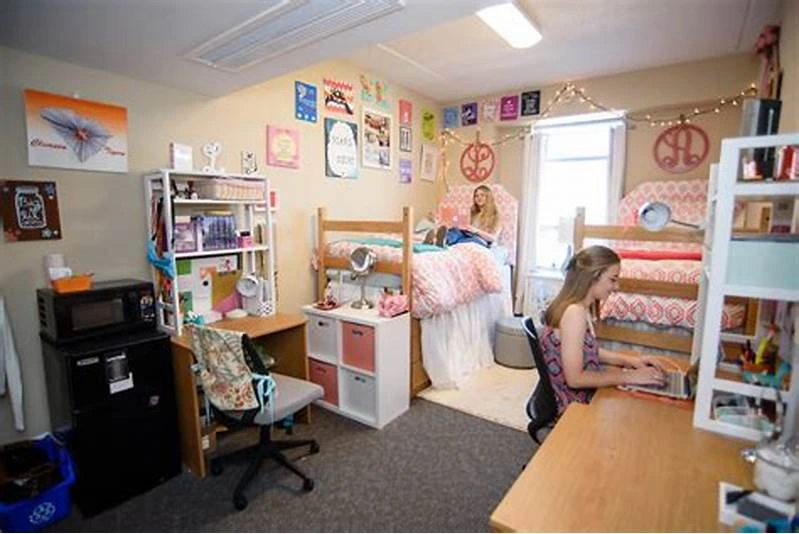Finding the right dormitory is a crucial part of your university experience. Dorm life not only offers convenience but also plays a significant role in shaping social life and academic success. This article provides a detailed overview of different university dormitory options to help you make an informed choice based on your preferences, lifestyle, and budget.

Types of University Dormitories
1. Traditional Dormitory
Traditional dormitories are the most common type of on-campus housing and are often the most affordable option. These dorms typically feature:
- Shared rooms (usually two students per room)
- Communal bathrooms on each floor
- Access to a shared kitchen or dining hall
- Basic furnishings such as a bed, desk, and closet
Pros:
- Cost-effective
- Great for making friends
- Convenient access to dining services
Cons:
- Limited privacy
- Shared facilities can be crowded
2. Suite-Style Dormitory
Suite-style dorms offer a middle ground between traditional dorms and apartment living. In these dorms, several students share a suite that includes:
- Private or semi-private bedrooms
- A shared living space
- Private bathrooms
Pros:
- More privacy than traditional dorms
- A communal living area for socializing
Cons:
- More expensive than traditional dorms
- May require additional cleaning responsibilities
3. Apartment-Style Dormitory
Apartment-style dorms resemble off-campus apartments but are still managed by the university. These dorms usually include:
- Private bedrooms
- A full kitchen
- A living room
- In-unit bathrooms
Pros:
- Maximum privacy
- Independence and access to kitchen facilities
Cons:
- Higher cost
- May feel isolated from campus social life
4. Single-Sex Dormitory
Some universities offer single-sex dormitories for students who prefer or require this option. These dorms offer the same amenities as other dorm styles but are exclusively for male or female students.
Pros:
- Comfortable environment for those who prefer gender-segregated living
- Can help create a focused and quiet living space
Cons:
- Limited social diversity
- Fewer options at many universities
5. Themed or Living-Learning Communities (LLCs)
Many universities offer themed dorms or Living-Learning Communities (LLCs) that group students with shared academic interests or lifestyles. Common themes include:
- Honors programs
- Sustainability
- Wellness or fitness
- Cultural or language immersion
Pros:
- Live with like-minded peers
- Specialized programs and activities
Cons:
- May not be available to all students
- May require an additional application process
Dormitory Amenities and Features
1. Wi-Fi and Internet Access
Most dorms offer free high-speed internet, which is essential for academic success and staying connected with family and friends.
2. Laundry Facilities
Laundry rooms are typically available in dorms, and some universities include the cost in your housing fees, while others may charge per use.
3. Common Areas
Shared lounges, study rooms, and recreational spaces are common in university dormitories, providing students with places to relax, study, and socialize.
4. Dining Services
Many traditional dorms are connected to or located near dining halls, offering meal plans for convenience.
5. Security Features
University dorms usually have security measures such as key card access, 24/7 front desk staff, and video surveillance to ensure student safety.
How to Choose the Right Dormitory
1. Consider Your Budget
Dormitory costs can vary widely depending on the type of room and the amenities offered. Make sure to choose a dorm that fits within your budget while considering the cost of meal plans and additional fees.
2. Think About Your Social Needs
Do you thrive in a bustling, social environment, or do you prefer a quieter space? Traditional dorms are great for meeting new people, while suite-style or apartment-style dorms offer more privacy.
3. Proximity to Classes
Living close to your academic buildings can save time and make it easier to attend classes, especially during bad weather or early morning lectures.
4. Amenities That Matter to You
Whether it’s access to a full kitchen, private bathrooms, or proximity to recreational facilities, prioritize the amenities that align with your lifestyle and needs.
5. Check Out Virtual or In-Person Tours
Many universities offer virtual tours of their dormitories, and if you can visit the campus, take the opportunity to explore your housing options in person.
Application Process and Deadlines
1. Apply Early
University dormitories, especially popular options, fill up quickly. Make sure to submit your housing application as soon as it opens to secure your preferred dorm.
2. Consider Roommate Preferences
Some universities allow you to choose your roommate, while others assign one based on your preferences (such as lifestyle, study habits, or cleanliness). Be honest about your habits to ensure a good match.
3. Waitlists
If your top dormitory choice is full, you may be placed on a waitlist. Stay in contact with the housing office to track your status.
Conclusion
Choosing the right dormitory can significantly enhance your university experience. By considering factors such as cost, amenities, and social environment, you can find a dorm that meets your needs and helps you thrive academically and socially. Take your time to explore your options, and don’t hesitate to reach out to the university’s housing department with any questions you may have.